Today it is very important to be aware of the issues that concern the care of our environment. And having knowledge about microplastics will help us take measures that help us contribute to the care of our habitat.
Microplastics are very small pieces of plastic that can be between five millimeters and imperceptible hundreds of nanometers in length. (a thread of hair can be about 70 times thicker).
Nano-sized plastics can pass through cell membranes.
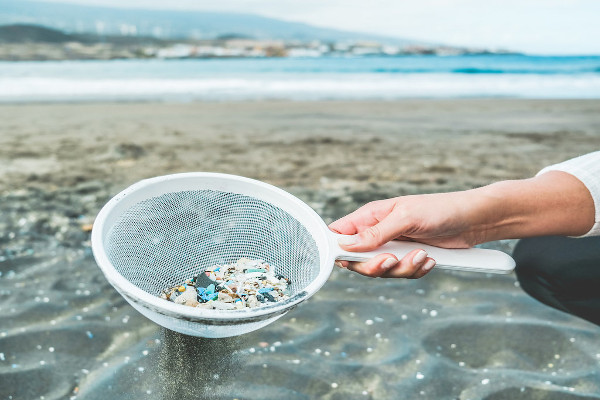
These elements are practically in all corners of the planet.
They can come from the sand of any beach in the world to the glacial zones in sea ice. Also from the earth’s surface to the airspace of our atmosphere.
There are studies that show that at least 80% of the sand on the world’s beaches contains microplastics.
We can affirm that absolutely all living beings can ingest plastic. For example, often sea animals confuse them with food.
Or due to its adherence characteristic, it can be present in their food source itself.
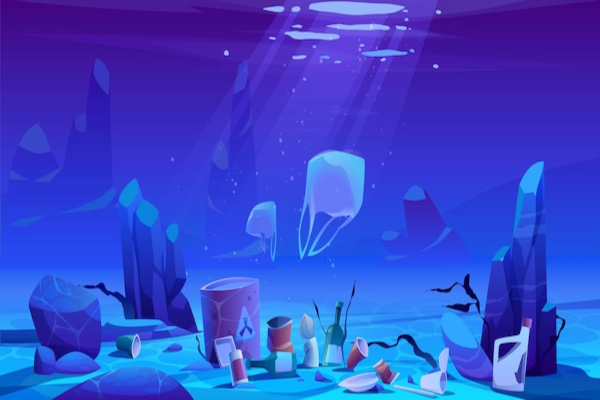
How do microplastics originate?
This is a very important question to answer. Some sources of origin of microplastics are:
Plastic objects in the form of waste: microplastics obviously do not originate as such.
Firstly, they result from an act of waste as a plastic or rubble object that gradually degrades or breaks down into smaller pieces.
That decomposition is normally the result of certain factors, such as: currents of water, sunlight and frictional wear with rocks or sand.
The largest percentage of the plastic in the ocean travels through currents from the surface of the earth. That is, it is not exactly dumped from a sailing vessel, although it is also a factor, but on a smaller scale.
This waste travels through the sea currents and reaches the beaches and oceans, also with the rain and the wind.
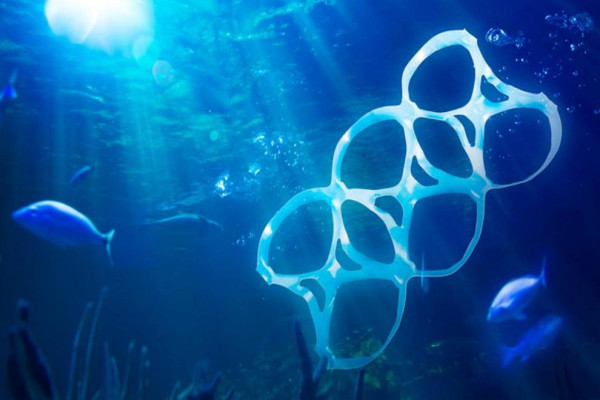
Read also: Risk assessment of microplastics in the ocean
Synthetic clothing:
Another source factor is the rise of fast fashion, which resorts to low-cost manufacturing, which involves the synthetic process and this causes a big problem by generating microplastics. The plastic that is a component of these clothes is loosened in microfibers with each washing in the machine.
It was seen that in just one wash of clothes, more than 700,000 microplastic fibers can be produced that reach water sources through discharges.
Plastic components of health and beauty products:
They are also called microspheres, they are pieces of polyethylene plastic used as exfoliants in health and beauty products, contained in cleansers, toothpastes, facial scrubs and others.
In the water filtrations they reach the marine sources. The use of these products was recently banned in some countries. In the US, the Microsphere-Free Water Act has been in force since 2021.
Lost containers:
A phenomenon that occurs is that cargo ships also lose containers during transfers.
It is calculated per year, the loss of between 1,000 and 100,000 containers on the high seas and these, when they break with content of plastic elements, these remain in the ocean and degradation to the state of microplastics is generated.
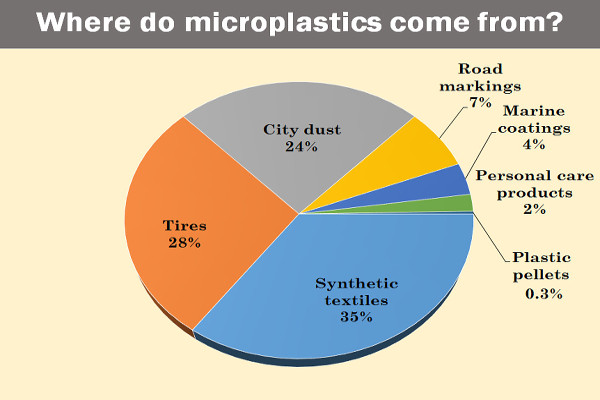
Tire wear:
Vehicles driven by land traction cause friction on the roads, causing wear and consequently spreading microplastic particles in the air and on the ground.
These particles travels by the wind and then washed away by rainwater, ending up in the ocean.
A scientific report stimates that about 30% of the volume of microplastics in aquatic sources comes from tire wear.
What are the impacts of microplastics?
Plastic itself is not the only polluting element.
These parts have additives that they add to the plastic content during the production process to give it special characteristics such as rigidity, hardness, color, etc.
They can be pigments, ultraviolet stabilizers, water repellents, flame retardants, hardeners such as bisphenol A, and softeners called phthalates.
These additives contain hazardous substances which gets realised in the process of degradation of the plastic or by transfer of the plastic to the material it contains.
Microplastics can cause problems in the digestive tract, causing feeding and reproductive disorders and in the growth and health of almost all living things.
Zooplankton is an important food source for many animals such as fish and cetaceans. However, when these larger species ingest microplastics accidentally, these problems become apparent.
This event deeply affects the food chain, as well as biodiversity around the world.
Likewise, studies demostrated that significant concentrations of microplastics can alter the function of the endocrine system, causing alterations in energy metabolism in both animal species and humans.
Microplastics also produce changes in liver physiology. They can affect fetal development and even the growth of children.
They can cause cancer and other pathologies. With the investigations that are still ongoing, we continue to discover effects are still happening, both on the environment and to living beings.
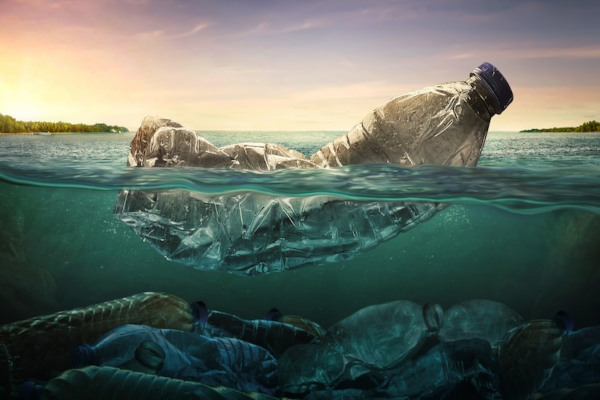
How can we act in relation to microplastics?
Becoming aware of the negative consequences of microplastics, we must agree as citizens to reject the plastic industry. Also giving support to the Organizations that fight against pollution with these materials, also supporting marine conservation efforts.
We can exercise our citizen right by requiring government institutions to legislate in favor of the protection of the environment. And to exercise the corresponding control for its strict compliance.
Discourage the production of food packaged in plastics, putting pressure on companies to make radical and impactful changes.
The aforementioned “fast fashion” industry must also subside under pressure from consumers. Encouraging the production of garments made from organic materials such as cotton or linen.
For this, it is key that the purchase shall be on sustainable products. Discarding production lines that are weak in the commitment to caring for the environment.
When it comes to cosmetic and skincare uses, it is best to look for products that are natural and do not contain microparticles.
There are many alternatives on the market.
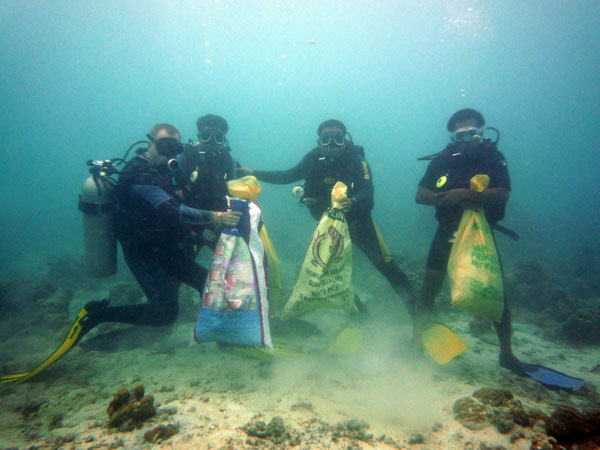
Read also: Divers from across the world attempt to break a world record in Ocean cleanup
Back to reusable items
It is important to return again to the use of reusable elements instead of disposable elements.
For example, non-plastic bottles instead of disposable plastic ones. Non-plastic reusable cups for coffee or tea, keeping reusable bags at home or in the worked.
Do not throw rubbish in the streets.
Nearly a third of the plastic packaging used worldwide becomes garbage that ends up littering city streets, clogging sewage systems. Many end up in rivers and oceans.
An informed consumer is a consumer who can decide to fight the problem of microplastics.
Spending money on products that don’t contribute to the plastic problem makes a world of difference!
